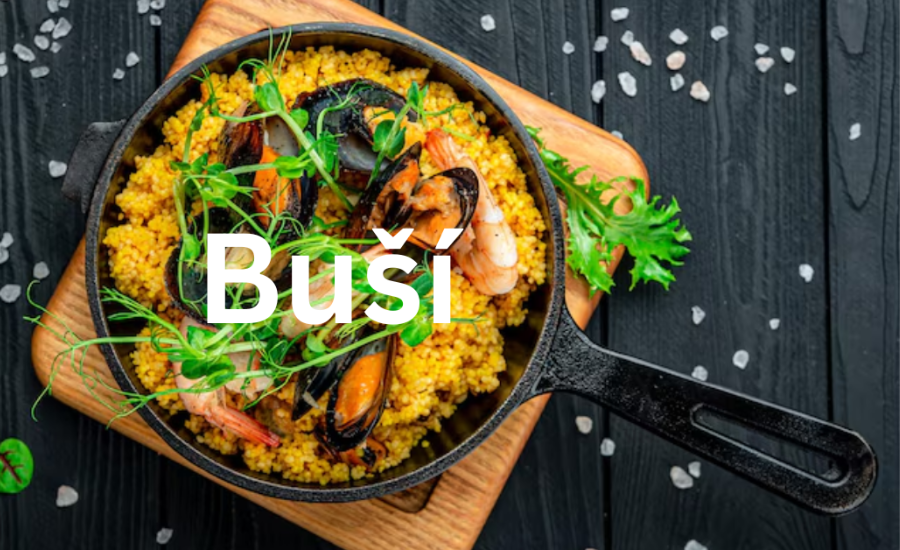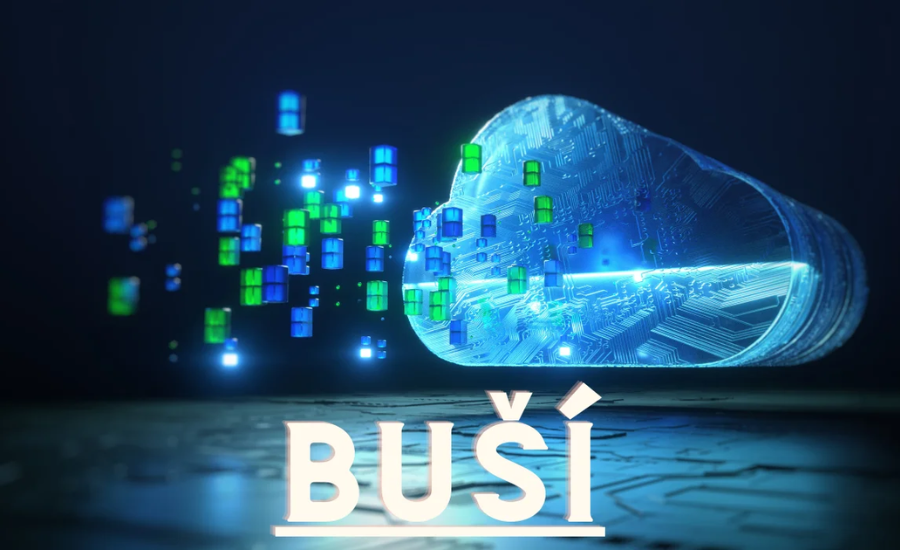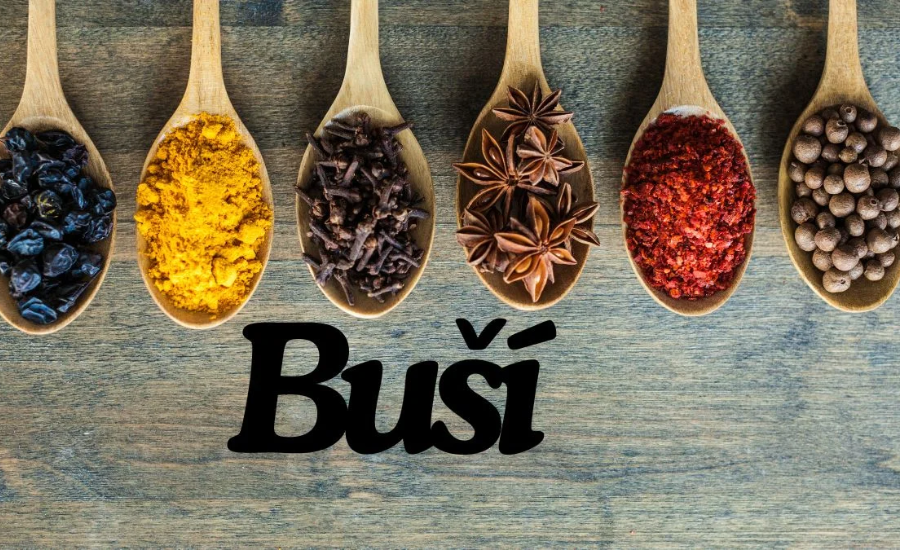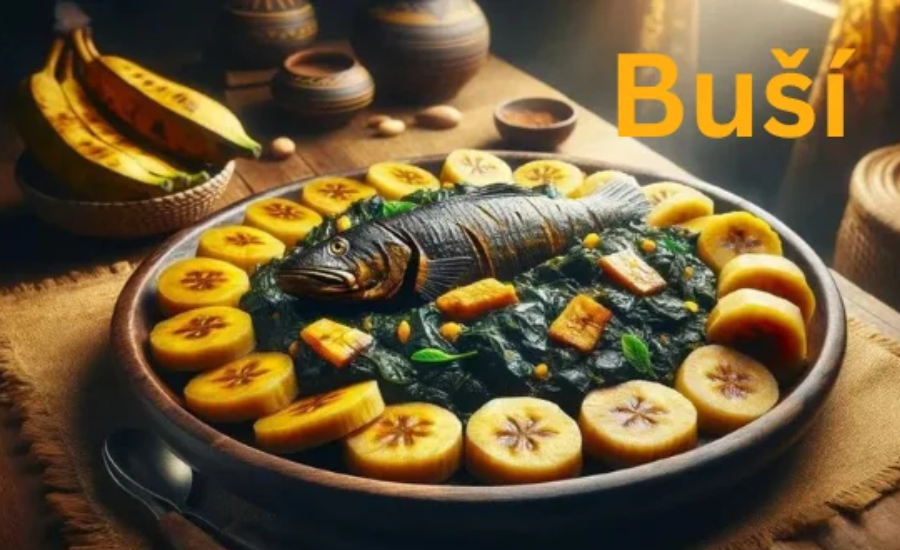Buší is not just a dish; it’s an experience—a symphony of rich flavors, cultural significance, and a cherished part of local culinary history. This traditional meal has captivated food lovers worldwide, leaving a lasting impact on both local and international kitchens. From its humble origins to its contemporary reinventions, Buší has managed to hold a special place in the hearts and homes of many. Join us as we explore the essence of Buší, diving into its deep historical roots, regional variations, preparation methods, and its presence in today’s culinary landscape.
What is Buší? Understanding the Dish

Buší is a comforting and hearty main course, often associated with community gatherings, festive occasions, and cozy family dinners. It is a dish that combines both simple and intricate flavors, offering a satisfying meal for a range of tastes and preferences. It’s a dish that has transcended generations, becoming a staple in various regions, while remaining deeply connected to the cultural identity of the areas it originates from.
Its preparation involves slow cooking, which allows the ingredients to meld together, creating a savory, complex profile that keeps the dish both timeless and adaptable.
The Origins and Evolution of Buší

The roots of Buší trace back several centuries, offering a glimpse into the culinary practices of ancient civilizations. While the precise origin of Buší remains a subject of debate, historical records point to its beginnings as a humble, rustic dish, created using whatever ingredients were readily available to local communities. During these early years, it was a common meal, often prepared for everyday consumption rather than festive occasions.
As trade routes expanded and cultures began to exchange culinary knowledge, Buší began to evolve. The dish adapted to include a wider variety of ingredients, influenced by the diverse spices, herbs, and cooking techniques that emerged from cross-cultural interactions. This evolving recipe is a testament to the way traditional dishes grow, change, and incorporate new elements, all while retaining their core identity.
Buší’s transformation throughout history is also an embodiment of how food can tell the story of a region’s agricultural, economic, and social development. From being a meal for the common folk to becoming a cherished delicacy enjoyed during cultural and social gatherings, Buší represents the adaptability and longevity of traditional cuisines.
Regional Variations of Buší: A Dish of Many Flavors

The beauty of Buší lies in its versatility. While the dish remains rooted in tradition, it has taken on many different forms depending on the region. The ingredients, preparation methods, and even the flavor profile vary widely, offering a dynamic and diverse culinary experience that appeals to a global audience.
Coastal Variations: In coastal regions, seafood takes center stage. Fresh fish or shellfish may replace or complement the traditional meat, adding a delicate sweetness and oceanic flavor to the dish. The use of local herbs and spices adds a distinctive flavor, influenced by the proximity to the sea.
Inland Variations: In more inland regions, where agriculture thrives, the dish may rely more heavily on root vegetables like carrots, turnips, and potatoes, alongside hearty greens. Spices can also vary, with some areas favoring richer, bolder flavors, while others opt for more subtle seasoning.
Spices and Seasoning: One of the most fascinating aspects of Buší is the array of spices used across different regions. While some areas favor a simpler approach with salt, pepper, and cumin, others may incorporate exotic spices such as saffron, turmeric, or chili peppers, each adding their own distinctive kick to the dish.
These regional variations not only highlight the flexibility of Buší but also emphasize the connection between food and place. Each variation is a reflection of the land it comes from, influenced by its natural resources, climate, and cultural practices.
The Art of Preparing Buší: A Step-by-Step Guide

If you’re ready to bring the flavors of Buší into your own kitchen, the following guide will help you create an authentic and delicious version of this timeless dish. The preparation process requires a balance of patience, skill, and the right ingredients. Let’s break it down step-by-step.
Ingredients:
2 pounds of meat (beef, chicken, or seafood—depending on your preference)
3 cups of root vegetables (potatoes, carrots, turnips, or a mix)
2 onions, finely chopped
4 cloves of garlic, minced
2 cups of diced tomatoes
1 cup of fresh herbs (parsley, cilantro, or a mix)
Spices: salt, pepper, cumin, paprika, optional chili powder

3 cups of broth (vegetable, chicken, or beef—choose based on your protein)
Olive oil for cooking
Instructions:
Preparation: Begin by washing and cutting the root vegetables into small, bite-sized pieces. Set them aside for later use.
Marinate the Meat: In a large bowl, coat your meat with a blend of salt, pepper, cumin, and paprika. Allow the meat to marinate for at least 30 minutes, ensuring that the spices infuse the protein.
Sauté the Aromatics: Heat olive oil in a large, heavy-bottomed pot. Add the chopped onions and garlic, sautéing until golden brown and fragrant. This step creates a base of flavors that will deepen as the dish cooks.
Cook the Meat: Add your marinated meat to the pot, searing it on all sides to lock in the juices and develop a rich, brown crust. This is a key step in intensifying the flavor of the dish.
Add Vegetables and Tomatoes: Once the meat is browned, add the root vegetables, tomatoes, and any additional vegetables or herbs you wish to include. Pour in the broth to cover the ingredients and bring the mixture to a boil.
Simmer: Reduce the heat and cover the pot. Let the dish simmer for 2-3 hours. The longer you let it cook, the more complex the flavors will become as they meld together.
Final Touches: Before serving, stir in your fresh herbs, adjusting the seasoning to taste. Allow the dish to simmer for another 10 minutes to incorporate the flavors.
Tips for Success
Patience is Key: The longer you simmer the dish, the more the flavors will develop. Take your time to allow the ingredients to merge and deepen.
Use Fresh Ingredients: The quality of the ingredients will directly impact the taste of the dish. Always opt for fresh, high-quality vegetables and meats when possible.
Feel Free to Experiment: Buší is a versatile dish that invites creativity. Feel free to experiment with different meats, vegetables, and spices to suit your preferences.
The Renaissance of Buší in Modern Kitchens

Despite its deep roots in traditional cuisine, Buší is experiencing a modern resurgence in kitchens around the world. Today, chefs are reimagining the dish, giving it new twists that fuse classic flavors with contemporary cooking methods.
One of the most exciting modern takes on Buší is the deconstructed version. Another modern innovation is the Buší bowl, which serves the dish over a base of grains or leafy greens, catering to the growing trend of health-conscious eating.
These contemporary adaptations allow Buší to remain relevant in an ever-evolving culinary landscape, bridging the gap between the past and the present. Whether served in its traditional form or reimagined with a modern twist, Buší continues to hold a special place in the hearts of food enthusiasts worldwide.
The Cultural and Social Significance of Buší
Buší is not just a meal—it is a cultural emblem that represents the values of hospitality, community, and tradition. In many communities, Buší is served during important celebrations, festivals, and family gatherings.
During special occasions, large pots of Buší are often prepared to feed many people, symbolizing abundance and unity. This sense of continuity and connection is what makes Buší more than just food; it is a celebration of culture and familial bonds.
Where to Find Buší: A Culinary Journey

For those eager to experience Buší in its most authentic form, there are numerous restaurants, markets, and culinary events around the world where you can enjoy this traditional dish.
Restaurant A: Known for its commitment to traditional cooking methods and locally sourced ingredients, this restaurant offers an authentic Buší experience that stays true to its roots.
Eater B: Located in the vibrant cultural heart of Vaucluse, Eater B provides a unique fusion of classic Buší flavors with modern culinary innovations, offering diners an exciting new take on the dish.
Diner C: Famous for its warm ambiance and generous portions, Diner C is a favorite among locals and tourists alike, known for serving hearty and satisfying Buší.
Tips for Food Lovers
Explore Local Markets: For a truly authentic Buší experience, visit local markets to purchase the fresh, high-quality ingredients that are essential to preparing this dish.
Attend Cultural Festivals: Look for cultural festivals that celebrate the dish’s heritage.
Facts
Cultural Heritage:
Buší is a traditional dish that has been passed down through generations, with deep cultural significance in many communities. It often symbolizes hospitality, community, and tradition.
Main Ingredients:
The dish typically includes meat (beef, chicken, or seafood), root vegetables (potatoes, carrots, turnips), onions, garlic, fresh herbs, and a variety of spices like cumin, paprika, and salt.
Slow Cooking:
The dish is known for its slow-cooked preparation, which enhances the flavor and allows the ingredients to meld together into a rich, savory profile.
Regional Variations:
Buší varies by region. Coastal regions often feature seafood, while inland areas incorporate more root vegetables and hearty greens.
Global Resurgence:
Buší has been reimagined in modern kitchens, with chefs creating deconstructed versions and Buší bowls to cater to contemporary tastes and dietary preferences.
Significant Occasions:
Buší is commonly served during cultural festivals, family gatherings, and celebrations, making it a dish closely tied to communal experiences.
FAQs
Q: What is the origin of Buší?
A: Buší’s origins are debated, but it is believed to have started as a humble, rustic dish that evolved over time with the exchange of spices, herbs, and cooking methods along trade routes.
Q: Can I make Buší vegetarian?
A: Yes, Buší can be made vegetarian by replacing the meat with plant-based proteins or more vegetables, while still keeping the savory and hearty flavors.
Q: How long does it take to cook Buší?
A: The cooking process typically takes around 2-3 hours of simmering to allow the flavors to fully develop and the ingredients to meld together.
Q: Can I experiment with ingredients in Buší?
A: Absolutely! Buší is a versatile dish, and you can experiment with different meats, vegetables, and spices to create variations that suit your taste.
Q: Is Buší served as a main or side dish?
A: Buší is traditionally served as a main dish, often as the centerpiece of a meal during family dinners or festive gatherings.
Q: Where can I find Buší?
A: Buší can be found in various restaurants, especially those that specialize in traditional or regional cuisines, and at cultural festivals celebrating its heritage.
Conclusion
Buší is more than just a meal; it is a cultural symbol that brings people together through its rich flavors, historical significance, and communal ties. Its adaptability and versatility have allowed it to evolve across generations, while still retaining its essence as a hearty, comforting dish. Whether enjoyed in its traditional form or through modern adaptations, Buší continues to captivate food lovers worldwide. It represents not just culinary heritage, but the power of food to unite people, celebrate tradition, and honor cultural identity.
Keep an eye on this: Blog Blower
